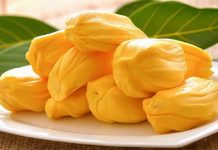Scientific name: Ficus hispida L. f.
Family: Moraceae
Synonym: Ficus oppositifolia Roxb.
Bengali/Vernacular name: Dumur, Kakdumur, Khoksha-dumur, Dhungri, Thoska.
Tribal name: Luhuk, Luhut clang, Whutclang (Murang); Themaset (Pangkhoa); Debeda sara gach, Dhumur gulu (Chakma); Fah-shai-ba, Jeemuiya (Marma); Tammang gaas (Tanchangya); Thainjang (Tripura).
English name: Hairy fig, Devil fig, Opposite-leaved fig, Rough-leaved stem fig.
Description of the plant: A very hispid small tree or large shrub, up to 15 m tall. Leaves simple, opposite, decussate, petiolate, lamina ovate-oblong to ovate-elliptic, 8-30 cm long, base cuneate to truncate-cordate, margin crenate-serrate to entire, apex acute to acuminate, distinctly scabrid on both surface. Hypanthodium in the leaf axils hanging branchlets from the trunk, usually obovoid, hispid, closed by 5-6 bracts. Fig depressed-globose to pyriform, greenish-yellow, hispid.

Plant parts used: Leaf.
Medicinal uses: Skin of the hairless portion of the head is rubbed with the leaves of the plant once a day until the baldness is cured.
Paste prepared from leaves of the plant is applied on the face once a day until the facial paralysis is cured.
Leaves are used as poultice to treat boils.
Distribution: Very common throughout Bangladesh in homestead and village thickets.
Is this plant misidentified? If yes, please tell us….















… [Trackback]
[…] Find More Information here to that Topic: natureinfo.com.bd/ficus-hispida/ […]